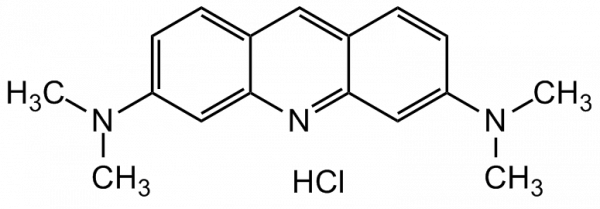Cookie preferences
This website uses cookies, which are necessary for the technical operation of the website and are always set. Other cookies, which increase the comfort when using this website, are used for direct advertising or to facilitate interaction with other websites and social networks, are only set with your consent.
Configuration
Technically required
These cookies are necessary for the basic functions of the shop.
"Allow all cookies" cookie
"Decline all cookies" cookie
CSRF token
Cookie preferences
Currency change
Customer-specific caching
FACT-Finder tracking
Individual prices
Selected shop
Session
Comfort functions
These cookies are used to make the shopping experience even more appealing, for example for the recognition of the visitor.
Note
Show the facebook fanpage in the right blod sidebar
Statistics & Tracking
Affiliate program
Conversion and usertracking via Google Tag Manager
Track device being used

| Item number | Size | Datasheet | Manual | SDS | Delivery time | Quantity | Price |
|---|---|---|---|---|---|---|---|
| CDX-A0669-L010 | 10 ml | - | - |
3 - 9 business days* |
122.00€
|
If you have any questions, please use our Contact Form.
You can also order by e-mail: info@biomol.com
Larger quantity required? Request bulk
You can also order by e-mail: info@biomol.com
Larger quantity required? Request bulk
Acridine Orange hydrochloride salt is a cell-permeable metachromatic fluorescent dye that stains... more
Product information "Acridine Orange Solution (2% in H2O)"
Acridine Orange hydrochloride salt is a cell-permeable metachromatic fluorescent dye that stains DNA and RNA. It is used as a nucleic acid-selective fluorescent cationic dye useful for cell cycle determination and staining dead cells. Being cell-permeable, it interacts with DNA and RNA by intercalation or electrostatic attractions respectively. When bound to DNA, it is very similar spectrally to fluorescein, with an excitation maximum at 502nm and an emission maximum at 525nm (green). When acridine orange associates with RNA, the excitation maximum shifts to 460nm (blue), and the emission maximum shifts to 650nm (red). Acridine orange will also enter acidic compartments such as lysosomes where it becomes protonated and sequestered. At low pH (inside the organelles), it will emit an orange fluorescence (peak at 590nm) and for optimal endosome visualization a blue light excitation (475nm) is used. Thus, acridine orange can be used to visualize primary lysosomes and phagolysosomes that may include products of phagocytosis of apoptotic cells. The dye is often used in epifluorescence microscopy and flow cytometry. It allows for visual detection of nucleic acids on agarose and polyacrylamide gels, can be used for differentiation of dsDNA (green fluorescence) and ssDNA/RNA (red fluorescence) and as a vitality test for determination of living cells. Spectral data: lambdaEx=502nm, lambdaEm=525nm (green, double strands) / lambdaEx=460nm, lambdaEm=650nm (red, single strands) / lambdaEx=475nm, lambdaEm=590nm (orange, acidic conditions). Product References: (1) F.H. Kasten, Int. Rev. Cytol. 21, 141 (1967) (Review) , (2) J.F. Golden & S.S. West, J. Histochem. Cytochem. 22, 495 (1974) , (3) J.F. Golden, et al., J. Histochem. Cytochem. 27, 522 (1979) , (4) J.K. Frost, et al., J. Histochem. Cytochem. 27, 545 (1979) , (5) H.W. Tyrer, et al., J. Histochem. Cytochem. 27, 552 (1979) , (6) R.N. Paul, Stain Technol. 55, 195 (1980) , (7) S. Mirrett, Inf. Contr. Hosp. Epidemiol. 3, 250 (1982) (Review) , (8) Z. Darzynkiewicz, et al., Curr. Protoc. Cytom. Chapter 7, Unit 7.3 (2004) (Review) , (9) J. Han & K. burgess, Chem. Revs. 110, 2709 (2010) , (10) R.W. Sabnis, Handbook of Fluorescent Dyes and Probes (2015) , (11) M.P. Thome, et al., J. Cell Sci. 129, 4622 (2016) Appearance: Orange to red liquid. 200mg compound in 10ml water. Solubility: Identity: InChi Key: VSTHNGLPHBTRMB-UHFFFAOYSA-N Smiles: CN(C)C1=CC=C2C(N=C(C=C(N(C)C)C=C3)C3=C2)=C1.[H]Cl
| Keywords: | 3,6-Bis(dimethylamino)acridine hydrochloride, Acridine Orange N, Acridine Orange NO, Acridine Orange NS, Basic Orange 14, Basic Orange 3RN, C.I. 46005, C.I. Basic Orange 14, Rhoduline Orange NO, Sumitomo Acridine Orange NO |
| Supplier: | Chemodex |
| Supplier-Nr: | A0669 |
Properties
| Application: | Cell-permeable metachromatic fluorescent dye, DNA / RNA stain |
| MW: | 301.81 D |
| Formula: | C17H19N3 . HCl |
| Purity: | >98% (HPLC) |
| Format: | Solution |
Database Information
| CAS : | 65-61-2| Matching products |
Handling & Safety
| Storage: | +4°C |
| Shipping: | +20°C (International: +20°C) |
Caution
Our products are for laboratory research use only: Not for administration to humans!
Our products are for laboratory research use only: Not for administration to humans!
Information about the product reference will follow.
more
You will get a certificate here
Viewed

